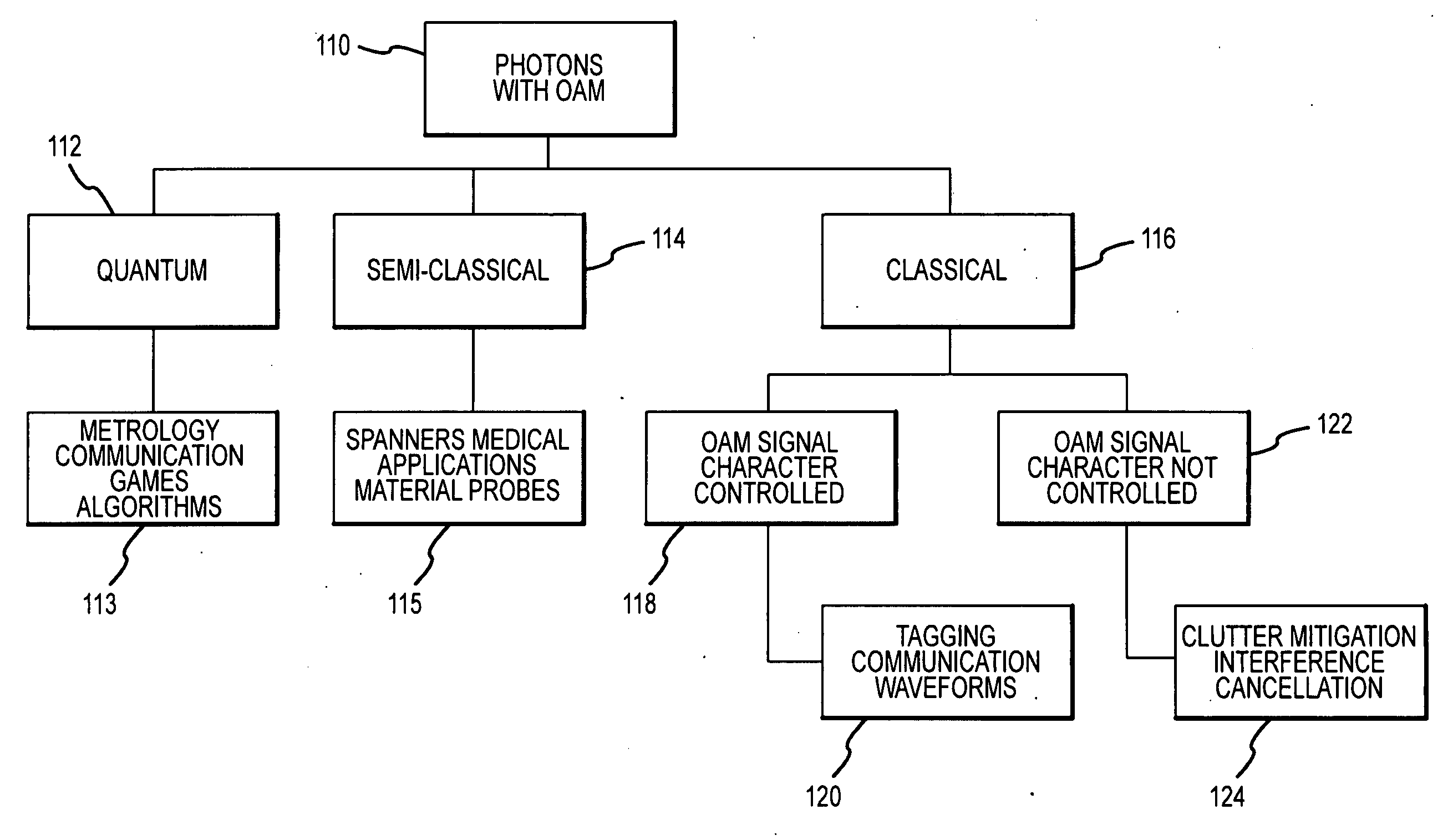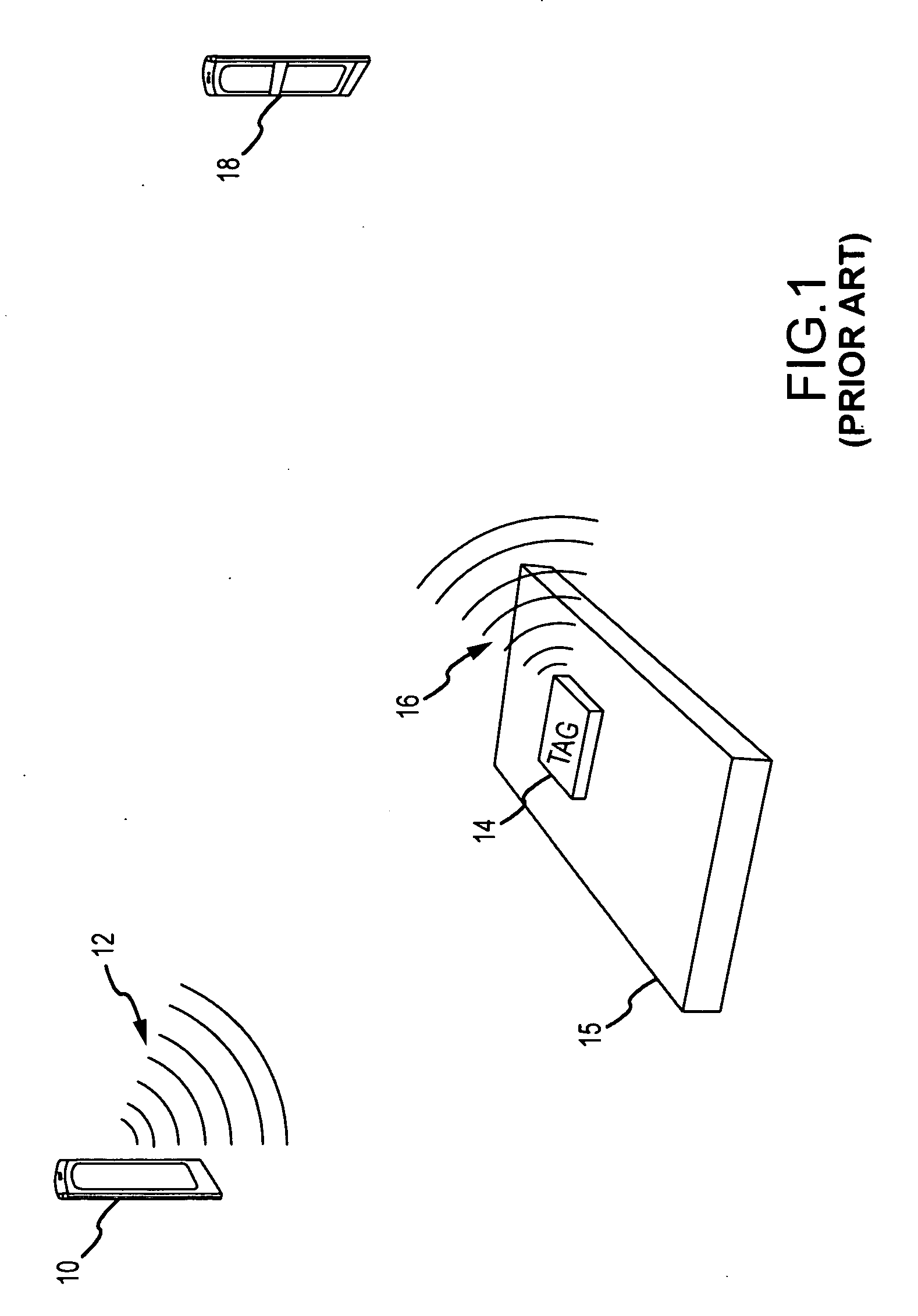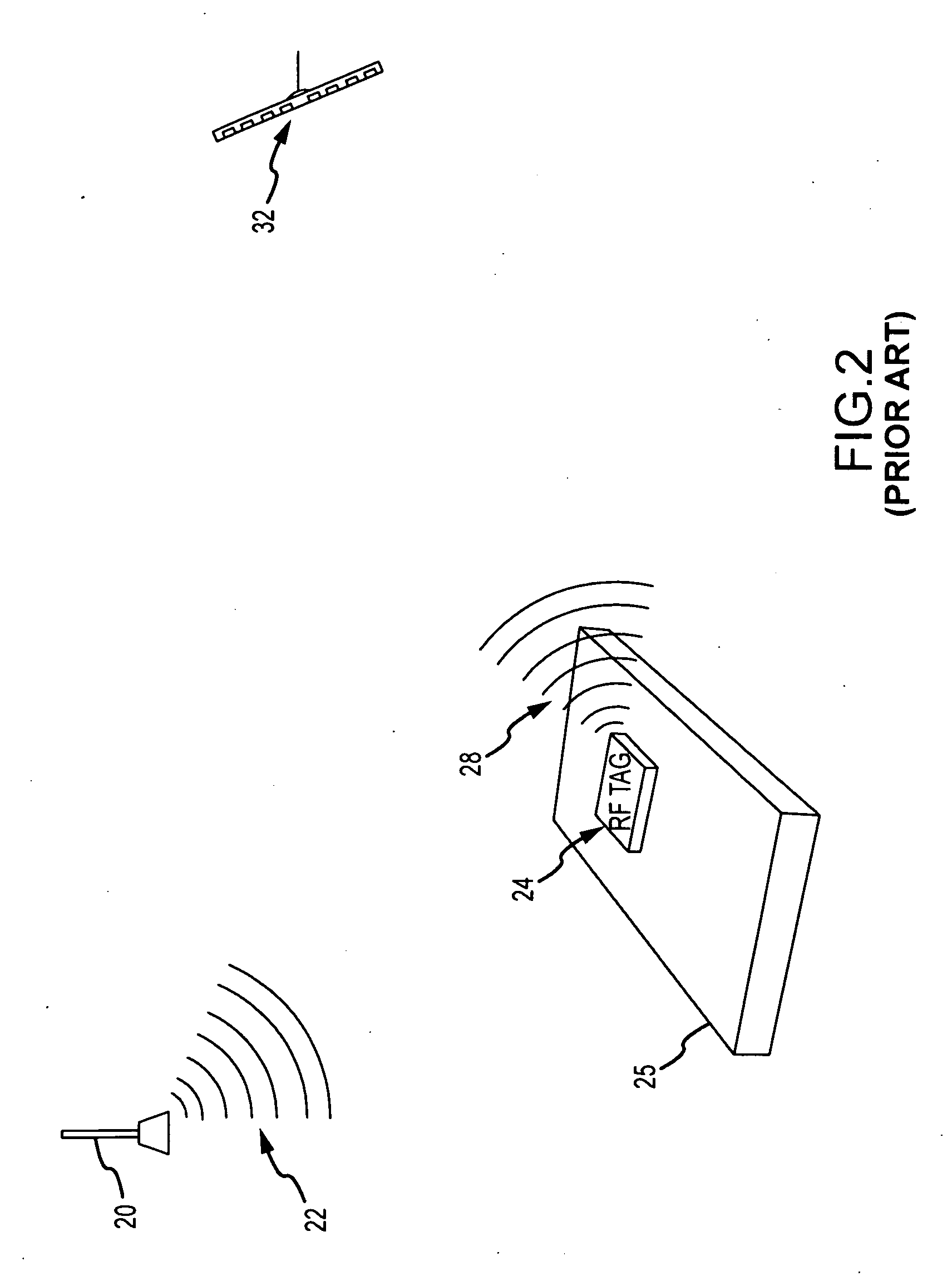System and method of orbital angular momentum (OAM) diverse signal processing using classical beams
a signal processing and orbital angular momentum technology, applied in the field of orbital angular momentum (oam) diverse signal processing using classical beams, can solve the problems of system security, source cannot generate just any combination of oam components, and expect the oam tag to function properly, so as to enhance the processing capability for clutter mitigation and increase security
- Summary
- Abstract
- Description
- Claims
- Application Information
AI Technical Summary
Benefits of technology
Problems solved by technology
Method used
Image
Examples
Embodiment Construction
[0033]The present invention describes a system and method of OAM diverse signal processing using classical beams for applications in which OAM signal character is controlled such as optical tagging and applications in which OAM signal character is not controlled such as clutter mitigation and interference cancellation for target detection, identification etc. This is accomplished by transmitting a source beam having a prescribed state with one or more non-zero OAM components along a source path, reflecting the beam off a ‘tagged’ or ‘untagged’ target and receiving the return beam in the direct return path to measure the one or more OAM components to identify the target. The direct return path retraces the source path with perhaps a small offset induced by the OAM tag or target. The full beam front received along the direct return path is needed to reconstruct the wave front. This provides affords a high degree of security in communication. The OAM transmitter / receiver and / or OAM tag...
PUM
 Login to View More
Login to View More Abstract
Description
Claims
Application Information
 Login to View More
Login to View More - R&D
- Intellectual Property
- Life Sciences
- Materials
- Tech Scout
- Unparalleled Data Quality
- Higher Quality Content
- 60% Fewer Hallucinations
Browse by: Latest US Patents, China's latest patents, Technical Efficacy Thesaurus, Application Domain, Technology Topic, Popular Technical Reports.
© 2025 PatSnap. All rights reserved.Legal|Privacy policy|Modern Slavery Act Transparency Statement|Sitemap|About US| Contact US: help@patsnap.com



